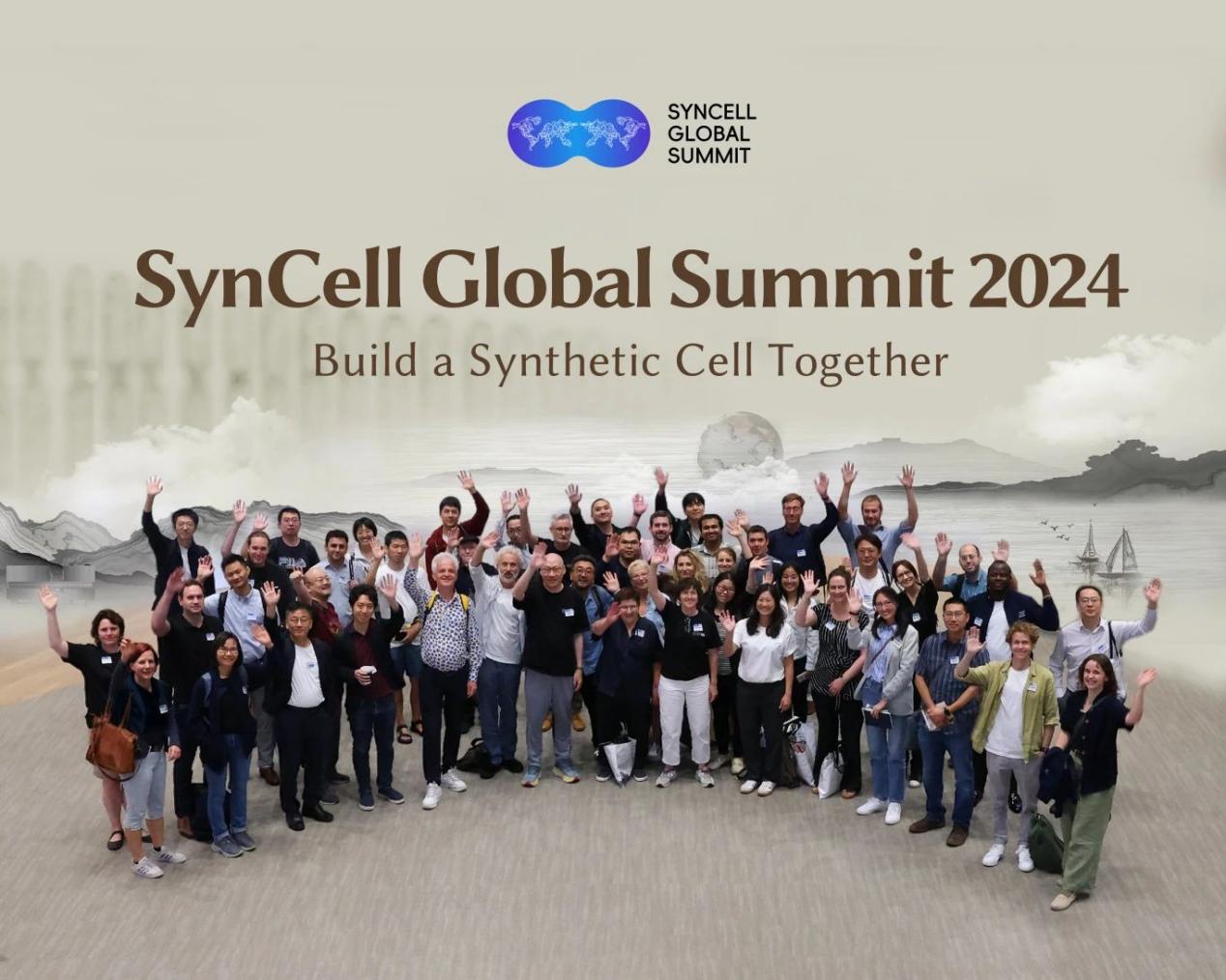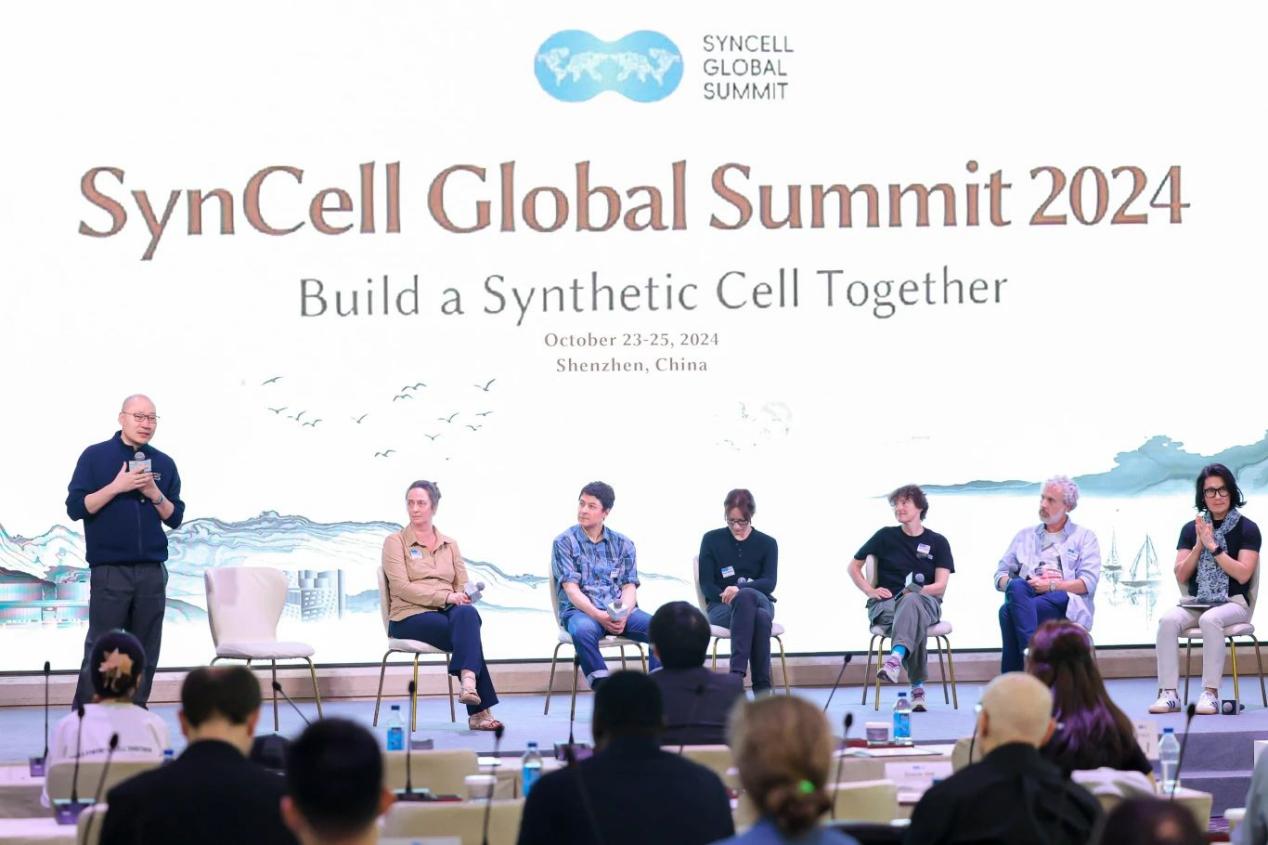Syncell Global Summit
Name: Syncell Global Summit
Title:International SynCell Alliance Established
Date:Oct 23–25,2024
Add:Shenzhen Guangming Science City
October 23–25, 1st Synthetic Cell Global Summit was successfully held in Shenzhen. As an academic event in the field of synthetic cells, this conference invited representatives of scientists in synthetic biology from 37 universities and research institutions across 15 countries on five continents to share the current development status, cutting-edge scientific issues, and technological innovations in synthetic cells, and explore potential international collaboration opportunities.
This conference was a strategic discussion on technological development and international cooperation in the global synthetic cell field, marking that research in this field is moving toward a new stage of expanded cooperation and rapid development.
At the conference, Researcher Liu Chenli from the Shenzhen Institute of Advanced Technology, Chinese Academy of Sciences announced the establishment of the Syncell Global Organizing Committee, composed of representatives from six countries: China, the United States, France, the Netherlands, Germany, and Singapore. This is a firm commitment to continuously promote global cooperation in the synthetic cell field. Marileen Dogterom, member of the Steering Committee of the Synthetic Cell European Alliance, Fellow of the Royal Netherlands Academy of Arts and Sciences, and Chair Professor at Delft University of Technology, announced that the second Synthetic Cell International Conference will be held in May 2026 at Delft University of Technology in the Netherlands.
First SynCell
 lobal Summit
lobal Summit
Newly Awarded Nobel Laureate and Representatives of Global Synthetic Biology Scientists Engage in In-Depth Dialogue to Explore Scientific Development Together.
This conference was co-initiated by representatives of scientists in synthetic biology from multiple countries as co-chairs, including foundational figures in synthetic biology: Professor George Church of Harvard University, Professor Jay Keasling of UC Berkeley, Professor Cees Dekker of Delft University of Technology (Netherlands), Professor Petra Schwille of the Max Planck Institute of Biochemistry (Germany), Professor Ariel Lindner of the French National Institute of Health and Medical Research, Professor Matthew Chang of the National University of Singapore, and Researcher Liu Chenli of the Shenzhen Institute of Advanced Technology, Chinese Academy of Sciences.
The conference united the Synthetic Cell European Initiative (SynCell EU), U.S. Build-A-Cell, SynCell Asia, and SynCell Africa, inviting 48 representatives of scientists in synthetic biology from heavyweight research institutions and organizations in 15 countries across five continents—including the Netherlands, Germany, France, UK, Denmark, Israel, Austria, USA, Uganda, Japan, Korea, Singapore, Thailand, China, and Australia—to gather together. Attendees included seven national academicians from the U.S., Netherlands, and Germany, including 2024 Nobel Laureate in Chemistry David Baker, as well as U.S. Build-A-Cell Steering Committee members Kate Adamala and Vincent Noireaux.
Members of the First Syncell Global Organizing Committee at the Conference Closing Ceremony

Synthetic biology is an emerging interdisciplinary field that aims to rationally design and synthesize biological systems with new functions. Among these, synthetic cells are currently one of the most challenging propositions in synthetic biology. The realization of synthetic cells will cross the boundary of life from non-existence to existence, helping us reveal the ultimate proposition of the essence of life. The series of underlying universal technologies for biosynthesis derived from synthetic cell research are expected to provide new solutions for healthcare, energy, agriculture, climate, etc. Therefore, synthetic cells are both a fundamental scientific problem and a common pursuit of the global scientific community.
"What do you think is the biggest challenge in achieving an artificial synthetic system transitioning from non-living to living?" At the conference, facing this question posed by Researcher Liu Chenli, George Church stated that although current artificial synthetic cell systems possess certain biological functions, achieving a system close to a real cellular life system still faces enormous challenges, such as how to precisely regulate biomolecule concentrations and coordinate the speed and efficiency of different biological processes.
David Baker pointed out at the conference that artificial protein design is an important direction for synthetic cells. After billions of years of evolution, the structures of biomolecules are extremely complex. To achieve biological functions similar to real biomolecules, one approach is to first understand how they work, then simplify the design using artificial intelligence. Another approach is to use artificial intelligence for de novo design based on target functions. Currently, both approaches have their advantages; we need to use them in parallel with bidirectional iteration to break through the design of complex biomolecules with specific biological functions.
Participants deeply discussed diverse topics in the synthetic cell field and looked ahead on how to further build consensus, promote international cooperation, and effectively address opportunities and challenges in synthetic cells. With the successful conclusion of this Synthetic Cell International Conference, it is expected to attract more international research institutions and organizations to join the frontier research in synthetic cells, promoting human well-being.
At the conference, participants focused on the theme of "synthetic cells," centering on scientific challenges, technological breakthroughs, AI empowerment, application scenarios, and societal impacts. Through academic reports and roundtable forums, they deeply exchanged regional research approaches, philosophies, latest discoveries, and collaborative visions in synthetic cells globally, and conducted in-depth discussions on how to effectively promote international strategic discussions and establish long-term cooperation mechanisms.
Participants unanimously agreed that jointly building a global scientific cooperation network around bottom-up "synthetic cells" is not only a new opportunity to promote knowledge sharing, technological exchange, and talent cultivation but also a milestone in driving deep global scientific interaction and sustainable development.
Professor Petra Schwille, Chief Co-coordinator of the German Max Planck "MaxSynBio" Synthetic Biology Research Program and key promoter of the Synthetic Cell European Alliance, mentioned at the conference that hosting the first Synthetic Cell International Conference will break geographical and cultural boundaries in global synthetic cell research, promote scientific collaboration among continents and regions, strengthen resource sharing, and advance the free flow of scientific knowledge and growth of young talents.
"We realize that geographical separation remains a challenge for global synthetic cell research. We hope that through this conference, we can exchange ideas with more researchers from Europe, Asia, and beyond, pool wisdom, and achieve truly borderless international open cooperation beyond geography and institutions," said Professor Kate Adamala, co-founder of the U.S. Build-A-Cell consortium, expressing high expectations for the future of international cooperation in synthetic cell research.
Researcher Liu Chenli of the Shenzhen Institute of Advanced Technology, Chinese Academy of Sciences stated that the convening of this conference not only deepened mutual exchanges among scientists worldwide in synthetic cells but also opened new approaches to solving interdisciplinary research challenges. More importantly, during the conference, the Syncell Global Organizing Committee was established, and consensus was reached. The Synthetic Cell International Conference will be held in rotation across continents, strongly promoting more future international collaborative projects and exchange activities. A stable cooperation mechanism will inevitably attract more international research institutions and organizations to join frontier research, addressing scientific challenges common to all humanity.

